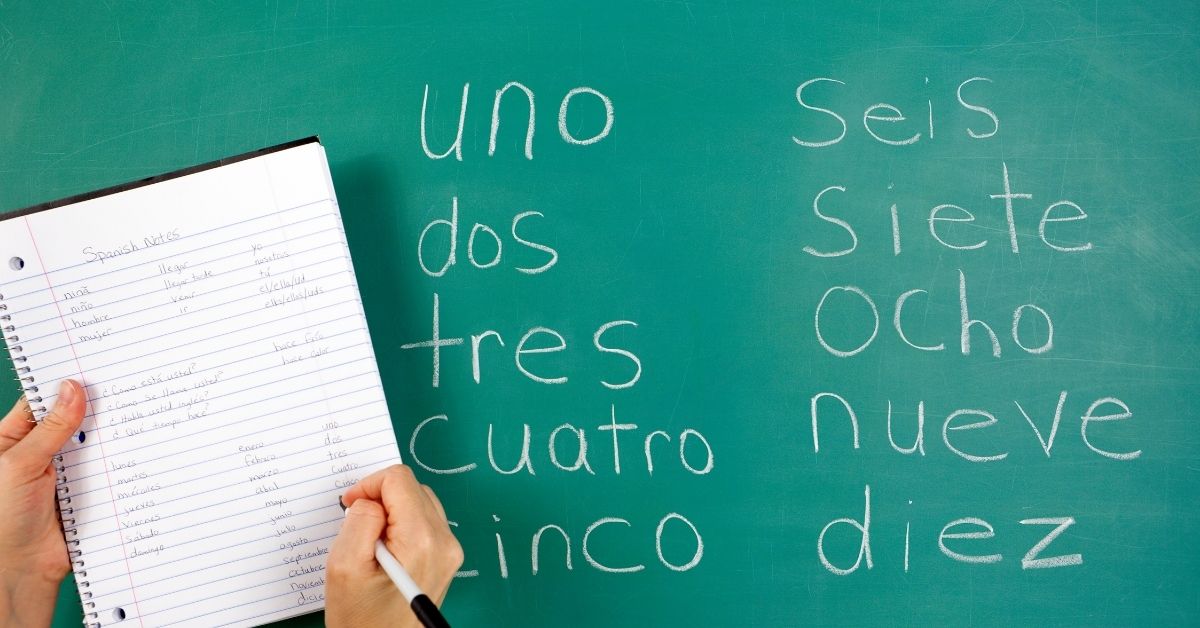Teaching your children Spanish at home is an exciting opportunity to introduce them to a new language and culture. Whether you’re fluent in Spanish or a beginner yourself, you can create a dynamic and meaningful learning experience. By using a mix of structured curriculum, daily practice, and cultural activities, your homeschool environment can become an engaging place for Spanish language learning.
Below are some practical strategies for teaching Spanish at home that will help your child learn effectively and enjoy the process.
Making Spanish Part of Your Homeschool Routine
Consistency is key to language learning. Incorporate Spanish into your daily homeschool routine in ways that feel natural and practical. Here’s how you can get started:
- Use Labels Around the House: Label items like “la puerta” (door), “la mesa” (table), or “el refrigerador” (refrigerator) with their Spanish names. Seeing these reminders daily reinforces vocabulary effortlessly.
- Introduce Spanish at Mealtimes: Use common phrases during meals, such as “¿Qué quieres comer?” (What do you want to eat?) or “Pásame el pan, por favor” (Pass the bread, please).
- Play Games in Spanish: Games like matching cards, word searches, or trivia quizzes in Spanish make learning feel like playtime. Apps and websites also offer interactive Spanish games tailored to different age groups and skill levels.
- Schedule a Spanish Hour: Dedicate one hour daily to immersed Spanish learning, where you try to communicate only in Spanish with your child.
By adding these small habits to your routine, learning Spanish becomes a natural and consistent part of your child’s life.

Using Structured Lessons
If you’re looking for a more organized approach, a structured curriculum can be a fantastic starting point. Materials are available for every age and skill level.
- Choose an Age-Appropriate Curriculum: There are plenty of homeschooling Spanish resources online, from beginner books for young learners to advanced grammar guides for teens.
- Leverage Interactive Online Resources: Websites and programs like Duolingo, Rockalingua, and Babbel offer guided lessons, activities, and pronunciation practice.
- Set Learning Goals: Define specific objectives, such as learning 10 new vocabulary words each week or mastering past-tense verbs by the end of the month. Goals provide motivation and a clear sense of achievement.
- Track Progress with Assessments: Periodically review your child’s understanding through quizzes or simple assessments. It encourages accountability and provides an opportunity to celebrate milestones.
While structured lessons help establish a foundation, supplementing them with creative activities can boost engagement.
Combining Fun and Learning
Language acquisition works best when it’s enjoyable. Beyond lessons, you can incorporate fun, immersive activities into your teaching strategy.
- Sing Spanish Songs Together: Music aids memory retention. Check out songs like “La Bamba” or children’s tunes like “Los Pollitos Dicen” to make learning engaging.
- Watch Spanish-Language Content: Movies, TV shows, or YouTube videos in Spanish help with listening comprehension. Choose options with subtitles so children can follow along while building vocabulary.
- Read Spanish Books: Begin with simple picture books and move on to short stories or novels as your child progresses. Reading out loud also helps improve pronunciation.
- Encourage Writing in Spanish: Have your child keep a daily journal where they write a few sentences or stories in Spanish. This enhances grammar skills while fostering creativity.
- Practice Speaking Out Loud: Engage in real-life role-playing activities like ordering food in a restaurant or shopping at a market—entirely in Spanish.
By mixing these creative techniques with your lessons, you’ll keep your children excited about learning while helping them use Spanish practically.
Tailoring Lessons to Your Child’s Learning Style
Every child learns differently, so identifying their style can make all the difference.
- Visual Learners: Use flashcards, diagrams, and colorful charts to teach vocabulary and concepts.
- Auditory Learners: Focus on listening exercises, audiobooks, and conversations. You could even play Spanish podcasts or radio shows in the background.
- Kinesthetic Learners: Incorporate movement through activities like acting out scenarios or playing physical games that use Spanish vocabulary.
- Text-Based Learners: Tap into textbooks, workbooks, or written exercises for those who prefer studying in text form.
When your teaching approach aligns with your child’s strengths, their engagement and confidence grow, leading to better retention of the material.
Turn everyday items into learning tools! Grab our Spanish labels and stick them on household objects to make language learning fun for your child!
Exploring Spanish Culture
Language learning isn’t complete without cultural context. Understanding where the language comes from adds depth and interest for your child.
- Learn About Different Countries: Assign your child a project on a Spanish-speaking country. They can research facts, traditions, and famous landmarks and present their findings in Spanish.
- Celebrate Spanish-Speaking Holidays: Explore holidays like Día de los Muertos or La Tomatina. Create crafts, prepare authentic dishes, or listen to traditional music to make lessons interactive and fun.
- Cook Spanish Recipes Together: Get in the kitchen and cook meals like empanadas or paella while learning new vocabulary for ingredients and actions.
- Be Part of a Community: Find local Spanish-speaking events or online groups where your child can interact with native speakers. Real-world use builds confidence and fluency.
Exposing your child to Spanish-speaking cultures enhances their understanding and serves as inspiration to continue learning.
Teaching Spanish When You’re Not Fluent
If you’re not fluent in Spanish, don’t worry—it’s still possible to teach the language effectively. Plenty of resources exist to guide parents who are learning alongside their children.
- Language Apps and Platforms: Programs like Rosetta Stone or LingQ provide extensive language learning resources for beginners.
- Use Spanish Tutors or Coaches: Hire a tutor for advanced expertise and individual guidance. Platforms like Preply and iTalki connect students with native speakers.
- Join Online Courses: Enroll in a family-friendly online Spanish class. Many programs cater specifically to homeschooling families and combine interactive lessons with community learning.
- Partner With Other Homeschooling Families: Join or create a co-op group where parents can share teaching duties. Having peers to practice with also adds a social component for your children.
Even if you’re learning as a beginner, modeling curiosity and effort will send a powerful message to your kids about perseverance and growth.
Building Confidence in Your Child
Confidence is a vital ingredient in language learning. Encourage your child to make mistakes and remind them it’s all part of the process.
- Praise Efforts and Achievements: Celebrate every new word learned, every sentence formed, and every misstep turned into progress.
- Set Realistic Goals: Focus on small, attainable goals instead of overwhelming tasks. Success builds momentum.
- Provide Plenty of Practice: The more your child uses Spanish, the more confident they’ll feel. Help them practice speaking, writing, and listening whenever possible.
- Create a Supportive Environment: Make your homeschool a judgment-free zone where your child feels free to try new things without fear of failure.
Confidence grows with time, practice, and encouragement. A supportive approach ensures your child feels capable and motivated to continue learning Spanish.
Expanding Your Resources
Leveraging a wide range of tools enriches the homeschooling experience.
- Textbooks and Workbooks: These provide structure and cover essential language skills. Start with beginner books like Easy Spanish Step-By-Step.
- Language Apps and Games: Interactive platforms bring variety to learning. Look for apps that reward progress, such as Duolingo or Quizlet.
- Audiovisual Tools: Audiobooks, movies, and music create immersive moments that help sharpen listening skills.
- Community Resources: Many communities have Spanish classes, cultural events, or native speakers who can support your child’s learning.
- Webinars and Articles for Parents: Stay informed with up-to-date tips and strategies from educational websites and homeschooling blogs.
With so many accessible tools, teaching Spanish at home becomes much simpler and more enjoyable.
By using these strategies for teaching Spanish at home, you can create an educational experience that is both effective and inspiring. Whether you’re tailoring lessons to your child’s style, tapping into cultural activities, or relying on user-friendly resources, the possibilities are endless. With consistency and creativity, you’ll help your child not only learn Spanish but fall in love with the process.







